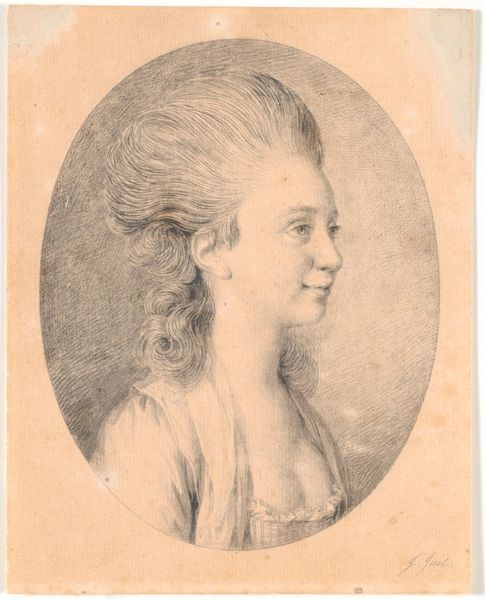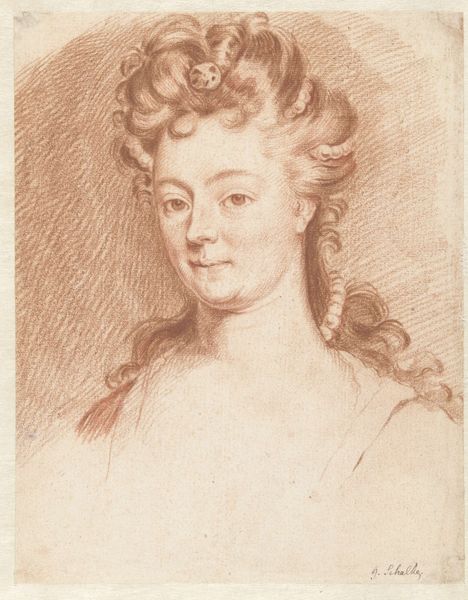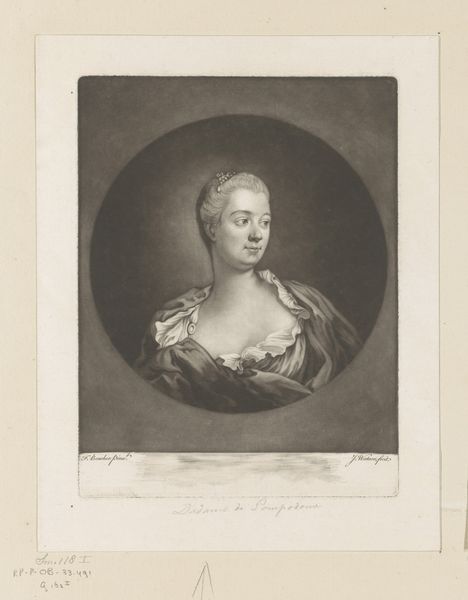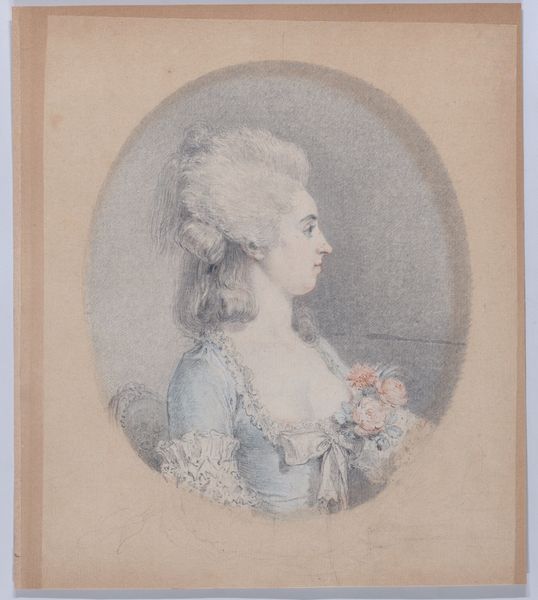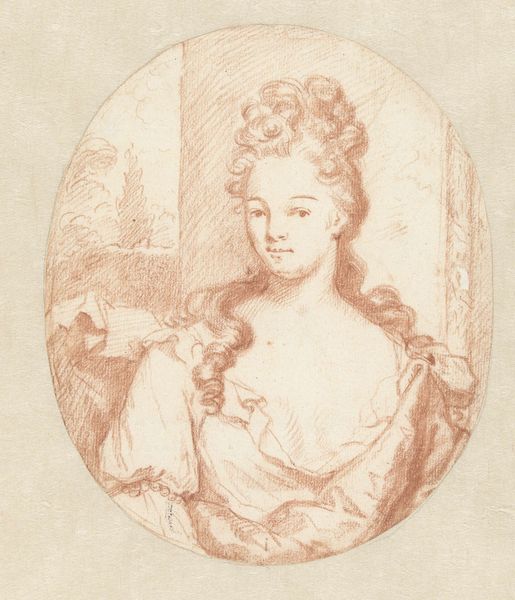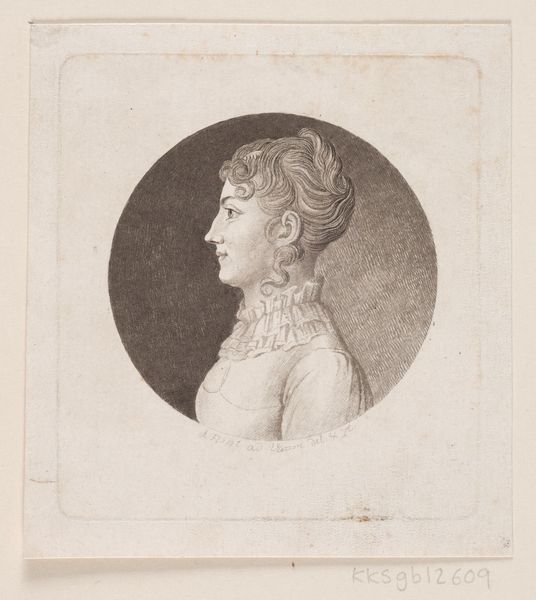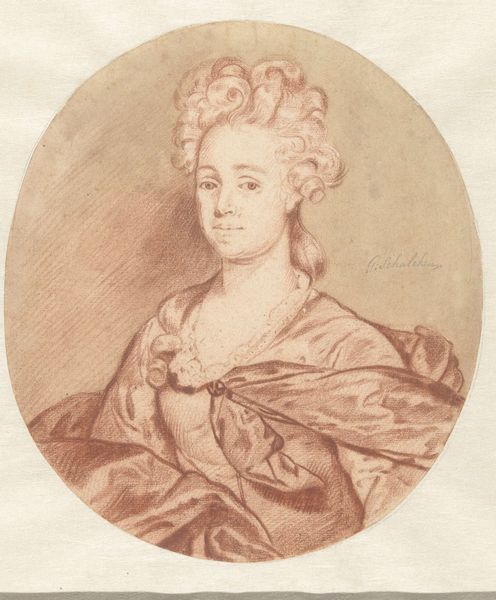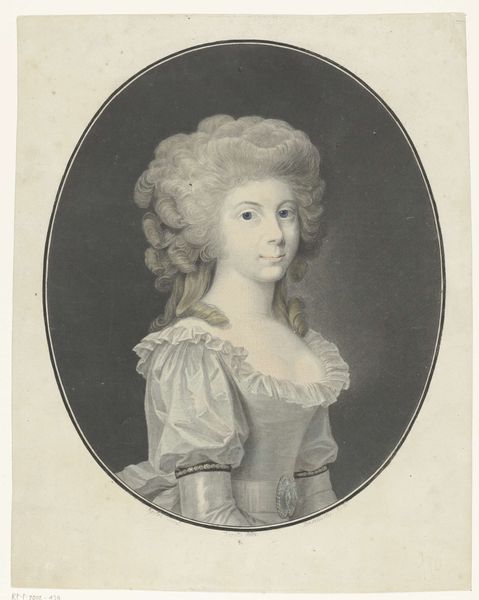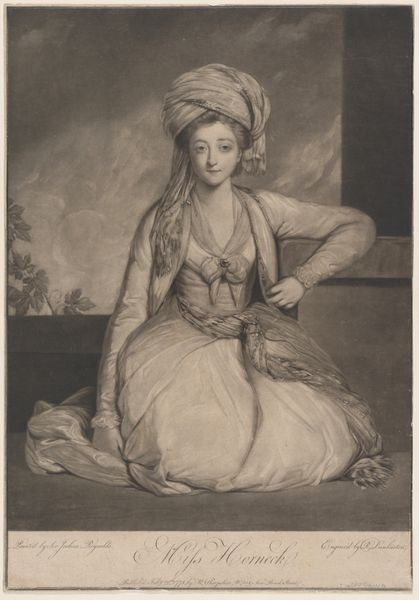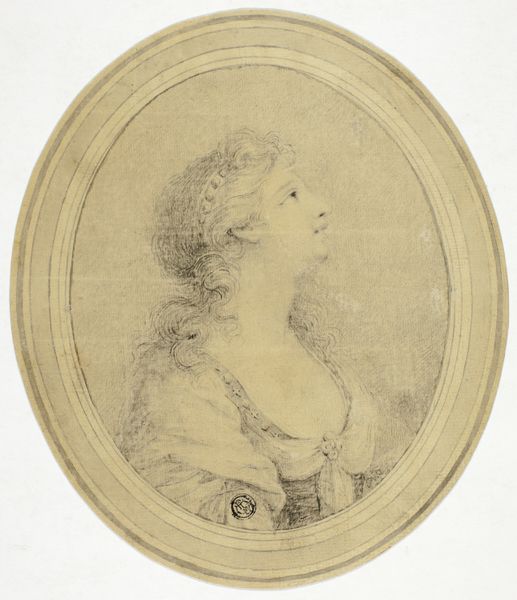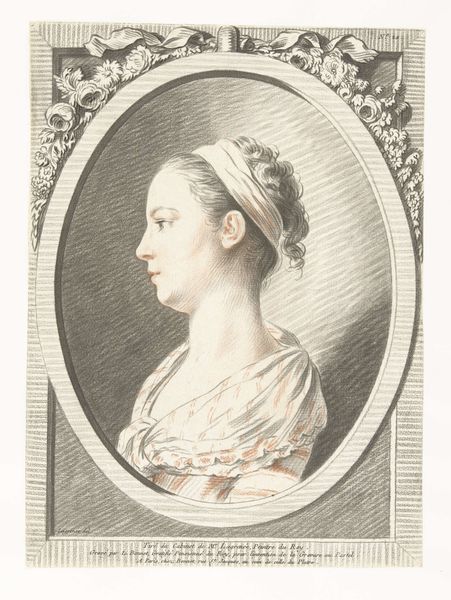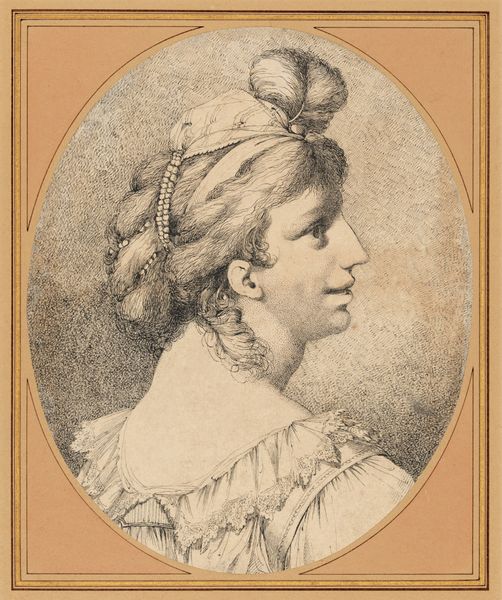
Portræt af Madame Charles Bonnet, født de la Rive. Brystbillede i trekvart profil mod højre i tegnet stenoval 1778
0:00
0:00
drawing, pencil
#
portrait
#
drawing
#
neoclacissism
#
figuration
#
pencil
#
academic-art
Dimensions: 213 mm (height) x 167 mm (width) (bladmaal)
Editor: This is a pencil drawing titled "Portræt af Madame Charles Bonnet", created in 1778 by Jens Juel. It’s delicate, isn't it? And the oval shape is kind of unique. How do you interpret its historical and cultural significance? Curator: Well, think about the late 18th century: the age of Enlightenment ideas spreading, and revolution brewing. This portrait, with its Neoclassical style and emphasis on idealized beauty, reflects the values of the elite. Notice the subject’s elaborate hairstyle – it's a status symbol, reflecting wealth and privilege in pre-revolutionary Europe. How might this imagery play into the sociopolitical context of the time? Editor: I see what you mean. It’s a representation of power and status. So, this seemingly simple portrait actually has a lot to say about the social hierarchy. Is that why it's displayed in the National Gallery? Curator: Exactly! The museum contextualizes artwork and often exhibits work which displays social norms for visitors to engage and question power dynamics within a historical setting. Furthermore, portraiture like this served a key role: they helped to construct and disseminate ideas about beauty, class, and identity, both shaping and reinforcing social norms. Editor: That's fascinating. It shifts my perspective from simply admiring it as a pretty drawing to considering its role in reinforcing societal structures. Curator: And consider where it was displayed – likely in a private home, reinforcing her position within a specific social network. How does that influence our understanding of it now being publicly accessible? Editor: It challenges our understanding as now more people have a broader interpretation and access than what it originally meant to portray when created in 1778. I'm going to remember to always look at who the work spoke to in its own era. Thanks! Curator: You're welcome. Reflecting on how art intersects with power and social narratives offers endless paths for investigation and discovery.
Comments
No comments
Be the first to comment and join the conversation on the ultimate creative platform.
